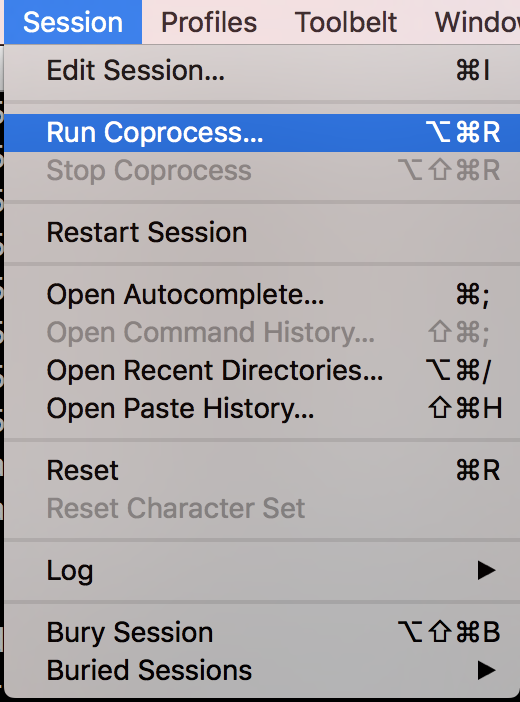
Iterm scripting mac os x#
If you tricked Mac OS X into using something else, use the right case and remove the lc() in the code.

Since Mac OS X uses a case insenstive (though preserving) file system, case doesn't matter. You can use the ~ home directory shortcut. The file is line-oriented and has the alias followed by its directory. You can define aliases in the ~/.new-iterm-aliases file. If you don't like that idea, use the included scripts/new-iterm program which does the same thing without the symlink.

If you want to change the program, edit the module. That module figures out if it's run as a script or included as a module and does the right thing. It's a symlink to the Mac::iTerm::LaunchPad module. The special directory named "finder" does the same thing (so you're stuck if you have a directory with that name: give it a different alias). Without arguments it finds the frontmost finder window and uses that as the directory. It allows you to use aliases (not the filesystem sort, the nickname sort) to save on typing. Within each tab, it changes to that directory. This script opens a new iTerm window and creates a tab for each directory. % perldoc -l Mac::Glue | xargs dirname | xargs new-iterm DESCRIPTION % new-iterm finder /Users/brian/Dev music ~/Pictures foo Aliases, defined in your own ~/.new-iterm-aliases Frontmost finder directory, using special alias He lives with his family in Vancouver, British Columbia, Canada.Mac::iTerm::LaunchPad - open a new iTerm window with one or more tabs SYNOPSIS -Frontmost finder directory, defaulting to desktop He is the author of Python Scripting for ArcGIS, published in 2013 with Esri Press. He has published over 50 journal articles and book chapters. His research has been funded by the National Science Foundation, the National Institute of Justice, and the National Institutes of Health. His research focuses on the robustness of spatial analytical techniques in the areas of crime analysis, environmental science, public health, spatial ecology, and water resources. His teaching includes courses in introductory GIS, spatial analysis and modeling, spatial statistics, and GIS programming.

Zandbergen is a professor in the GIS program at Vancouver Island University. Migrating scripts and tools from ArcGIS Desktop to ArcGIS ProĪrcGIS API for Python and Jupyter Notebookĭr. Managing Python packages and environments

Iterm scripting pro#
Python Scripting for ArcGIS Pro (9781589484993)
Iterm scripting upgrade#
Companion data and exercises are available online.Īdvanced Python Scripting for ArcGIS Pro is perfect for more experienced developers who are looking to upgrade their skills.ĭon't forget to also check out Esri Press's other Python title: Helpful "points to remember," key terms, and review questions are included at the end of each chapter to reinforce your understanding of Python. ArcGIS API for Python and Jupyter Notebook.Migrating scripts and tools from ArcGIS Desktop to ArcGIS Pro.Managing Python packages and environments.Writing specialized scripts using ArcPy.Some of the key topics you will learn include:
Iterm scripting how to#
Learn how to create a geoprocessing tool out of your script and automate tasks in ArcGIS Pro, how to share your tools with others, as well as master a number of more specialized tasks. Ready for something more complex? An easy-to-follow guide to writing specialized Python scripts and developing tools for spatial data in ArcGIS Pro.Īdvanced Python Scripting for ArcGIS Pro builds on Python Scripting for ArcGIS Pro (Esri Press, 2020). Advanced Python Scripting for ArcGIS Pro is the easy-to-follow guide to writing specialized Python scripts and developing tools for spatial data in ArcGIS Pro.


 0 kommentar(er)
0 kommentar(er)
